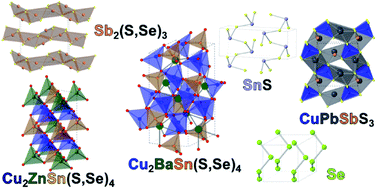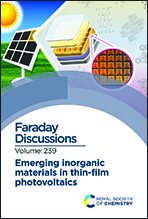Spiers Memorial Lecture: Next generation chalcogenide-based absorbers for thin-film solar cells
Abstract
Inorganic-based thin-film photovoltaics (TFPV) represents an important component of the growing low-carbon energy market and plays a vital role in the drive toward lower cost and increased penetration of solar energy. Yet, commercialized thin-film absorber technologies suffer from some non-ideal characteristics, such as toxic or non-abundant element use (e.g., CdTe and Cu(In,Ga)(S,Se)2, which bring into question their suitability for terawatt deployment. Numerous promising chalcogenide, halide, pnictide and oxide semiconductors are being pursued to bridge these concerns for TFPV and several promising paths have emerged, both as prospective replacements for the entrenched technologies, and to serve as partner (i.e., higher bandgap) absorbers for tandem junction devices—e.g., to be used with a lower bandgap Si bottom cell. The current perspective will primarily focus on emerging chalcogenide-based technologies and provide both an overview of absorber candidates that have been of recent interest and a deeper dive into an exemplary Cu2BaSnS4-related family. Overall, considering the combined needs of high-performance, low-cost, and operational stability, as well as the experiences gained from existing commercialized thin-film absorber technologies, chalcogenide-based semiconductors represent a promising direction for future PV development and also serve to highlight common themes and needs among the broader TFPV materials family.

- This article is part of the themed collections: The Spiers Memorial Lectures and Emerging inorganic materials in thin-film photovoltaics


 Please wait while we load your content...
Please wait while we load your content...